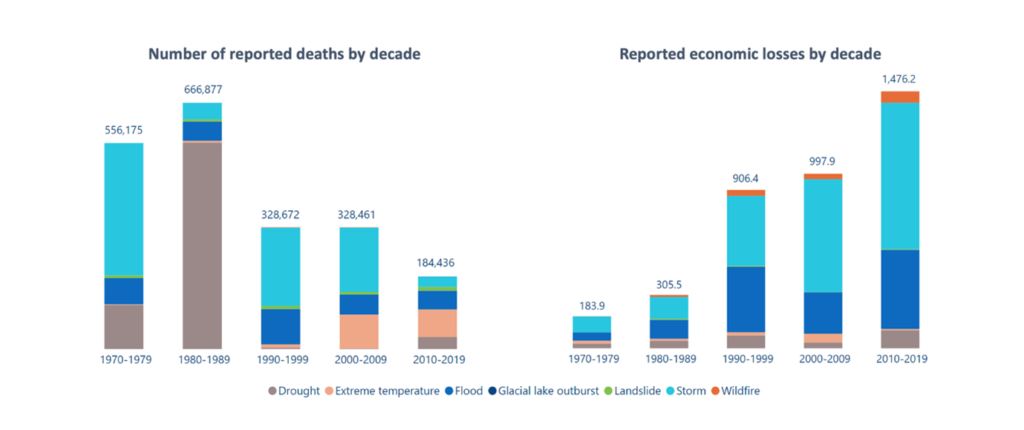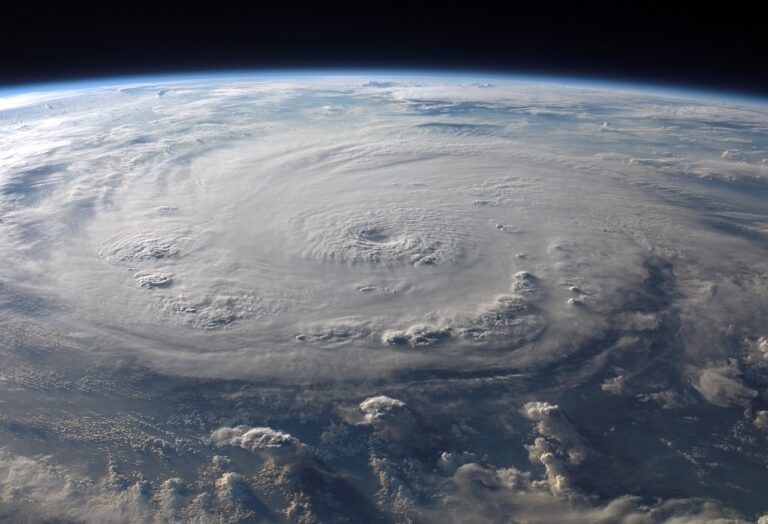Extreme weather-, climate- and water-related events caused 11,778 reported disasters between 1970 and 2021, with just over two million deaths and US$4.3tn in economic losses, according to new figures from the World Meteorological Organization (WMO).
Economic losses have soared but improved early warnings and coordinated disaster management have slashed the human casualty toll over the past half-century. Over 90% of reported deaths worldwide occurred in developing countries.
The USA alone incurred losses amounting to US$1.7tn, which is 39% of economic losses worldwide in the 51-year period. But Least Developed Countries (LDCs) and Small Island Developing States (SIDS) suffered a disproportionately high cost in relation to the size of their economies.
WMO issued the new findings for the quadrennial World Meteorological Congress, which opened on May 22, and called for accelerated and scaled-up action to ensure that early warning services reach everyone on Earth by the end of 2027.
The United Nations Early Warnings for All initiative is one of the top strategic priorities due to be endorsed by the World Meteorological Congress, WMO’s top decision-making body.
Prof. Petteri Taalas, WMO secretary-general, said, “The most vulnerable communities unfortunately bear the brunt of weather-, climate- and water-related hazards. Extremely severe cyclonic storm Mocha exemplifies this. It caused widespread devastation in Myanmar and Bangladesh, impacting the poorest of the poor. In the past, both Myanmar and Bangladesh suffered death tolls of tens and even hundreds of thousands of people. Thanks to early warnings and disaster management, these catastrophic mortality rates are now thankfully history. Early warnings save lives.”
WMO compiled the figures as an update to its Atlas of Mortality and Economic Losses from Weather, Climate and Water Extremes, which initially covered the 50-year period 1970-2019, based on the Centre for Research on the Epidemiology of Disasters’ (CRED) Emergency Events Database (EM-DAT).
Recorded deaths for 2020 and 2021 (22,608 in total) indicate a further decrease in mortality relative to the annual average of the previous decade. Economic losses increased – most of them due to the increasing severity and frequency of storms.

To view an updated version of the report, click here.



